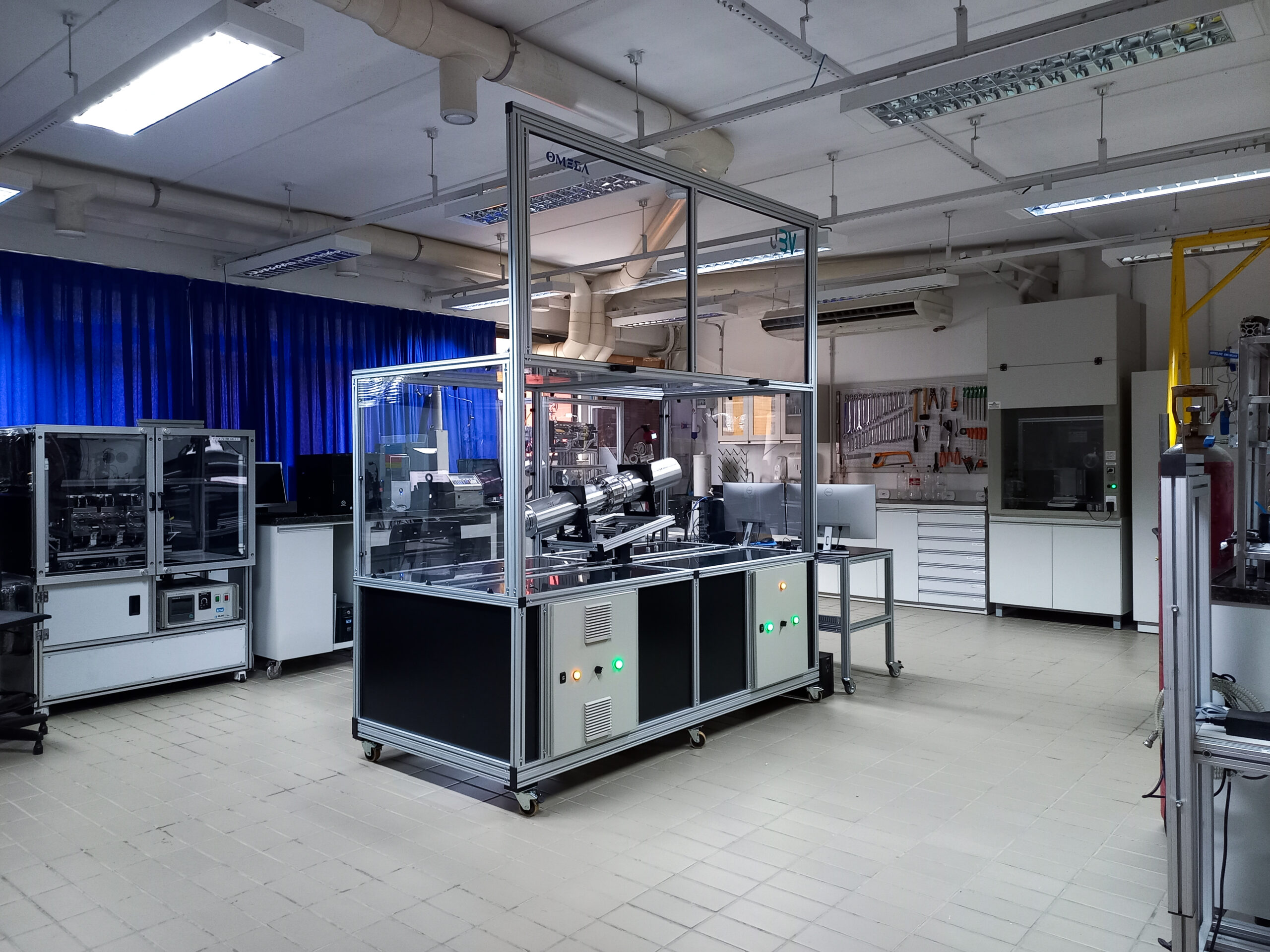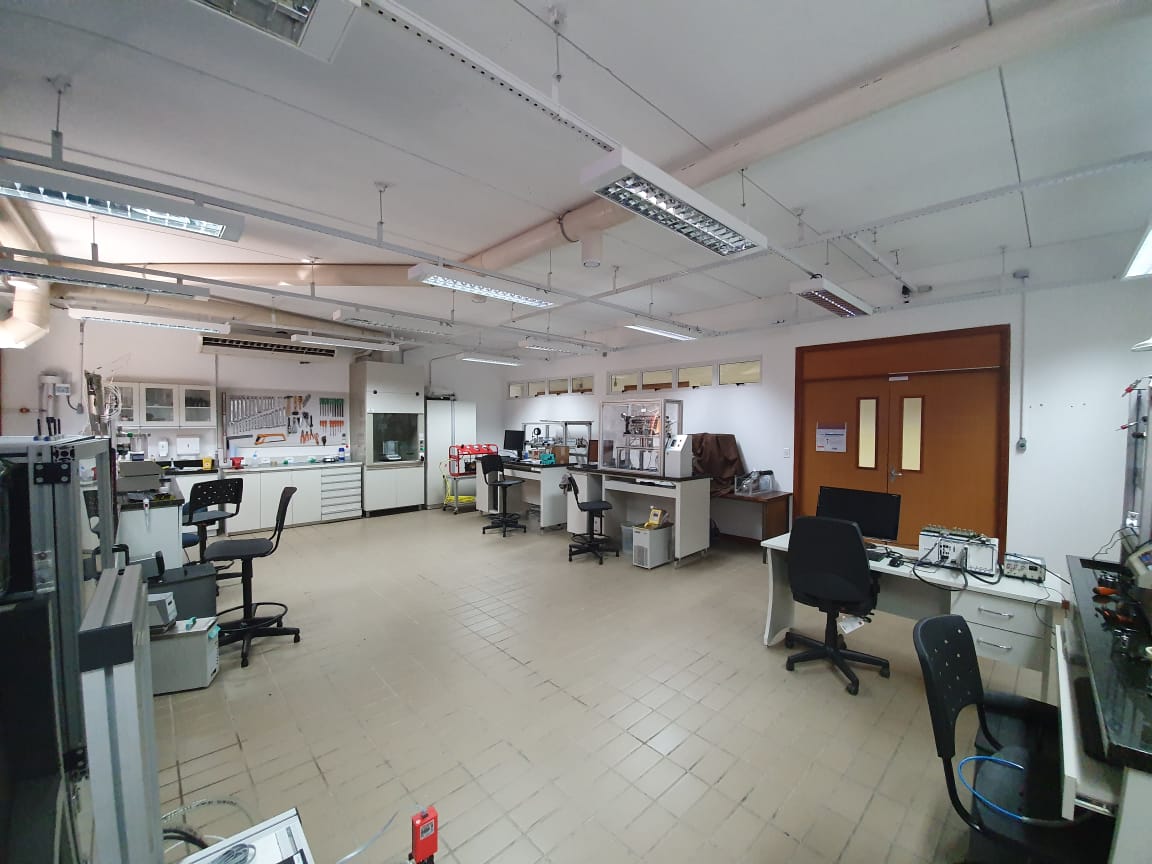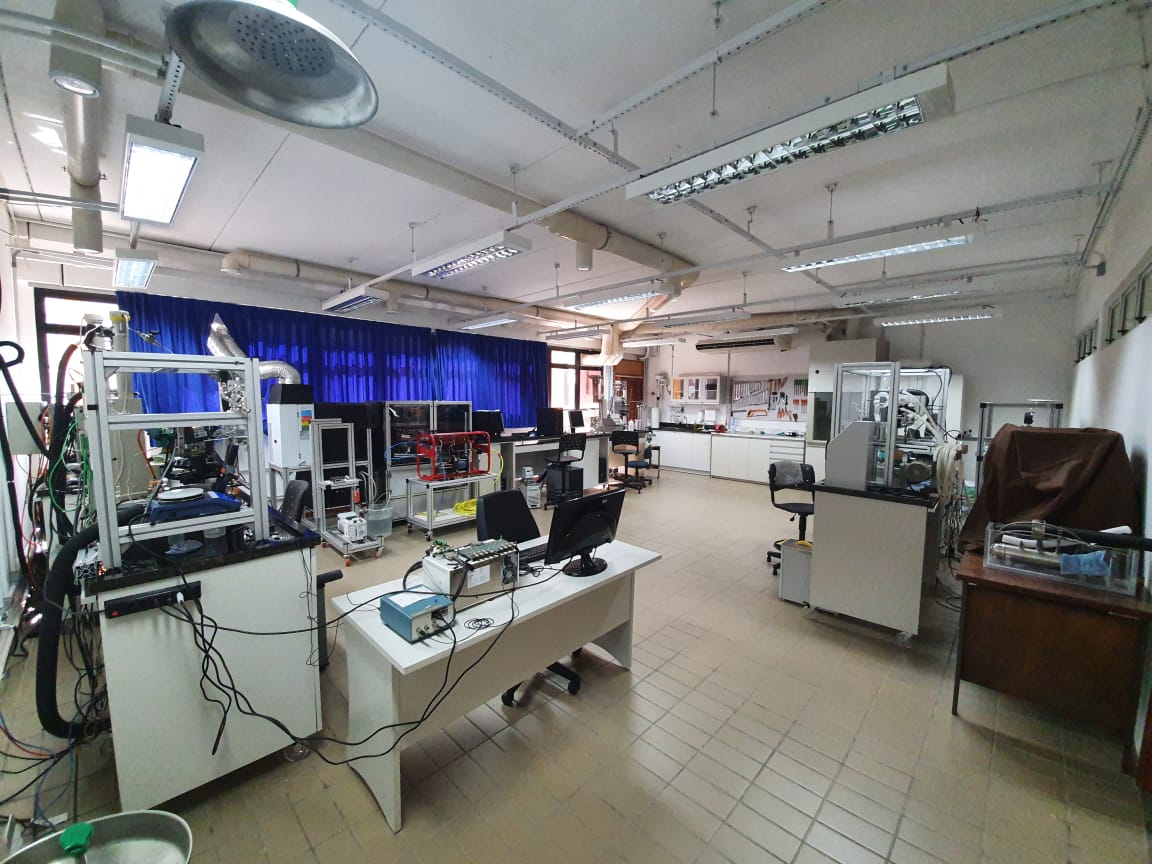Thermophysics of Fluids
The characterization of thermodynamic and transport properties of liquids, gases and solids is essential for the solution of various problems in many industrial processes, including the current NUEM focus on oil and gas production, as well as in other areas of science and technology. Practical methods of measuring thermodynamic properties, phase behavior and transport properties of complex fluid mixtures over wide range of temperature, pressure and composition require innovative test benches allied to novel measurement techniques. Likewise, the challenges brought by the oil industry make us look for the best of modern predictive models suited for practical application. The most appropriate calculation method for accurate process simulation makes use of both classical and advanced models which are developed and coded in-house or by the use and adaptation of commercial software.
Principal Investigator
Prof. Moises Alves Marcelino Neto, Dr. (mneto@utfpr.edu.br)
Research Topics
- Hydrates Phase Behavior
- Joule-Thomson Effect
- LLV Characterization
- Transport Properties
- Electrical Properties
Projects
Diffusion coefficients of gases in liquids are important properties in several industrial processes, including gas injection processes in oil recovery and even in the kinetics of gas hydrates in the oil industry. Diffusion coefficients of dense gases in liquids are evaluated using a PVT cell. When a gas is brought into contact with a liquid in a closed vessel at a constant temperature, the final state is determined by thermodynamic equilibrium. Nevertheless, the time that is required to reach the final state is determined from the diffusion process in the liquid phase. At the gas-liquid interface, different boundary conditions lead to a discrepancy in the diffusivity values necessary to reach the thermodynamic equilibrium in the required time.
The accurate experimental and prediction of phase equilibrium is a very important problem in many design and industrial process. Selecting the most suitable approaches to estimate the conditions that two or more phases will be in equilibrium is required. The wide ranges of temperature and pressure faced, beyond the infinite number of possible mixtures in different process, make no single experimental technique or thermodynamic model to be applicable in all cases.
Different experimental techniques are used for different scenarios: bubble and dew points, hydrates formation or other types of solid precipitations common in the oil industry. Visual, acoustic and PVT analysis are used depending on the circumstances. Thermodynamic modelling for the determination of equilibrium conditions in mixtures are evaluated together with the application of certain kinds of flash calculations.
For practical engineering applications, the temperature variation resulting from a pressure drop is a valuable information to be sought. The rate of temperature change with the pressure for an isenthalpic condition is called the Joule-Thomson coefficient. The ability in predicting this coefficient is important for designing and operating machines and systems in several industries such as oil and gas, chemical, refrigeration and other applications such as carbon capture and storage. Particularly in the oil and gas industry’s subsea operations, the accurate prediction of this coefficient is crucial in the evaluation of potential temperature fluctuations that might cause significant changes in some transport properties like viscosity, giving rise to production issues. This temperature fluctuation may also provoke the precipitation of heavy molecular particles or trigger the formation of hydrate particles, which can damage pumps and/or pipes or can even clog the pipeline.
In addition to hydrocarbons, an investigation of the Joule-Thomson prediction of hydrogen-bonding fluids, including several mixtures that exhibit cross-associating effects is realized.
Multiphase flow meters are used in the production of oil and gas in the exploitation of petroleum fields. These instruments can be placed at the well head or prior to the separation of the phases. The fraction and flow of each phase are determined from properties, such as density, viscosity, dielectric constant and flow velocity. Electrical properties of mixtures are important in the design of phase fraction detectors, such as impedance and capacitance void fraction sensors for two-phase flow in pipes.
Measurements of these properties are made at conditions representative of oil and gas exploitation. These data allow the calibration of multiphase flow meters used in the production stream of this fluid. Thermodynamic modelings are compared to experimental data to establish whether they can offer the accuracy necessary to calibrate multiphase flow meters.
One of the main challenges faced by the flow assurance area in the oil and gas industry is the formation of crystalline structures called hydrates. Under conditions of high pressure and low temperatures, water molecules can rearrange themselves and encapsulate small molecules present in natural gas, such as methane and ethane, forming solid crystals capable of agglomerating and plugging inside the pipeline. The most popular method used to prevent hydrate formation is the injection of chemicals known as thermodynamic inhibitors, usually alcohols, glycols, and salts. The addition of these chemicals shifts the hydrate formation conditions to higher pressures and lower temperatures, avoiding their formation in production lines. Typically, these inhibitors are injected at rates higher than the necessary ones due to uncertainties in the required dosage. Looking at this scenario, a computer program, named NUEMHYD, was developed to predict the formation conditions of natural gas hydrates in the presence of a single thermodynamic inhibitor and mixtures of them. To improve the calculation accuracy, a flash algorithm was implemented, and the composition of all phases present in the system is determined. It is necessary to accurately know the fraction of the inhibitor that will be wasted into the gas or the condensate phase, since only the fraction that is effectively into the aqueous phase will contribute to the inhibition of the system. Since the systems are composed by associative compounds (water, alcohols, glycols), it was chosen an equation of state capable of accounting these molecular interactions, the Cubic-Plus-Association (CPA), to perform the flash calculations. The hydrate phase is modeled according to the van der Waals and Platteeuw theory.
Highlighted Publications
Tiuman, E. T., Pereira, M. V. R., Marcelino Neto, M. A., Bertoldi, D., & Morales, R. E. M. (2021). Predictions of the Joule-Thomson coefficients and inversion curves from the CPA equation of state. The Journal of Supercritical Fluids, 168, 105077.
https://doi.org/10.1016/j.supflu.2020.105077
Cordeiro, J. C., Jr., Marcelino Neto, M. A., Morales, R. E. M., & Sum, A. K. (2019). Phase Equilibrium of Carbon Dioxide Hydrates Inhibited with MEG and NaCl above the Upper Quadruple Point. Journal of Chemical & Engineering Data, 65(1), 280–286.
https://doi.org/10.1021/acs.jced.9b01001
Jacomel, F. C., Sirino, T. H., Marcelino Neto, M. A., Bertoldi, D., & Morales, R. E. M. (2019). Loss of Methanol and Monoethylene Glycol in VLE and LLE: Prediction of Hydrate Inhibitor Partition. Journal of Chemical & Engineering Data, 64(9), 3889–3903.
https://doi.org/10.1021/acs.jced.9b00312
Sirino, T. H., Marcelino Neto, M. A., Bertoldi, D., Morales, R. E. M., & Sum, A. K. (2018). Multiphase flash calculations for gas hydrates systems. Fluid Phase Equilibria, 475, 45–63.
https://doi.org/10.1016/j.fluid.2018.07.029
Laboratory Facilities
The Flow Assurance Laboratory is focused on investigating thermodynamic properties and multiphase flow behavior using high-pressure cells coupled with commercial softwares and software developed by the group (NUEMHyd).



